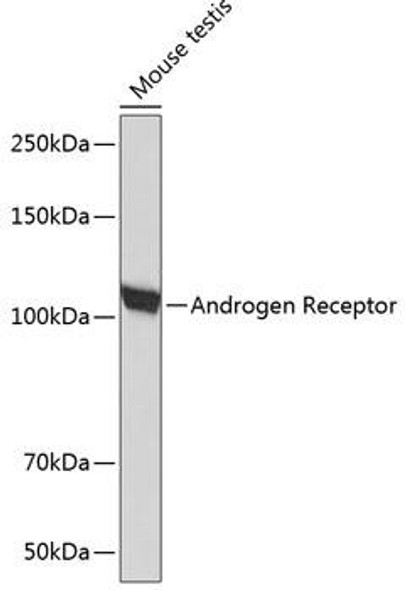Description
| Product Name: | PGE receptor EP4 (PTGER4) Rabbit pAb |
| Product Code: | CAB20295 |
| Size: | 50uL, 100uL |
| Synonyms: | PTGER4, EP4, EP4R |
| Applications: | WB |
| Reactivity: | Rat |
| Host Species: | Rabbit |
| Immunogen: | Recombinant protein of human PGE receptor EP4 (PGE receptor EP4 (PTGER4)). |
| Applications: | WB |
| Recommended Dilutions: | WB 1:500 - 1:2000 |
| Reactivity: | Rat |
| Immunogen: | Recombinant protein of human PGE receptor EP4 (PGE receptor EP4 (PTGER4)). |
| Purification Method: | Affinity purification |
| Storage: | Store at -20°C. Avoid freeze / thaw cycles. Buffer: PBS with 0.02% sodium azide, 50% glycerol, pH7.3. |
| Isotype: | IgG |
| Sequence: | Email for sequence |
| Gene ID: | 5734 |
| Uniprot: | P35408 |
| Cellular Location: | Cell membrane, Multi-pass membrane protein |
| Calculated MW: | 53kDa |
| Observed MW: | Refer to figures |
| UniProt Protein Function: | PTGER4: Receptor for prostaglandin E2 (PGE2). The activity of this receptor is mediated by G(s) proteins that stimulate adenylate cyclase. Has a relaxing effect on smooth muscle. May play an important role in regulating renal hemodynamics, intestinal epithelial transport, adrenal aldosterone secretion, and uterine function. Belongs to the G-protein coupled receptor 1 family. |
| UniProt Protein Details: | Protein type:Membrane protein, multi-pass; Membrane protein, integral; GPCR, family 1; Receptor, GPCR Chromosomal Location of Human Ortholog: 5p13.1 Cellular Component: plasma membrane Molecular Function:prostaglandin E receptor activity; protein binding Biological Process: G-protein signaling, coupled to cAMP nucleotide second messenger; immune response; JNK cascade; negative regulation of cytokine secretion; negative regulation of inflammatory response; negative regulation of integrin activation; positive regulation of cytokine secretion; positive regulation of inflammatory response; regulation of stress fiber formation; response to mechanical stimulus; T-helper cell differentiation |
| NCBI Summary: | The protein encoded by this gene is a member of the G-protein coupled receptor family. This protein is one of four receptors identified for prostaglandin E2 (PGE2). This receptor can activate T-cell factor signaling. It has been shown to mediate PGE2 induced expression of early growth response 1 (EGR1), regulate the level and stability of cyclooxygenase-2 mRNA, and lead to the phosphorylation of glycogen synthase kinase-3. Knockout studies in mice suggest that this receptor may be involved in the neonatal adaptation of circulatory system, osteoporosis, as well as initiation of skin immune responses. [provided by RefSeq, Jul 2008] |
| UniProt Code: | P35408 |
| NCBI GenInfo Identifier: | 548476 |
| NCBI Gene ID: | 5734 |
| NCBI Accession: | P35408.1 |
| UniProt Secondary Accession: | P35408,Q3MJ87, |
| UniProt Related Accession: | P35408 |
| Molecular Weight: | 53,119 Da |
| NCBI Full Name: | Prostaglandin E2 receptor EP4 subtype |
| NCBI Synonym Full Names: | prostaglandin E receptor 4 |
| NCBI Official Symbol: | PTGER4 |
| NCBI Official Synonym Symbols: | EP4; EP4R |
| NCBI Protein Information: | prostaglandin E2 receptor EP4 subtype |
| UniProt Protein Name: | Prostaglandin E2 receptor EP4 subtype |
| UniProt Synonym Protein Names: | Prostanoid EP4 receptor |
| Protein Family: | Prostaglandin E2 receptor |
| UniProt Gene Name: | PTGER4 |
| UniProt Entry Name: | PE2R4_HUMAN |






